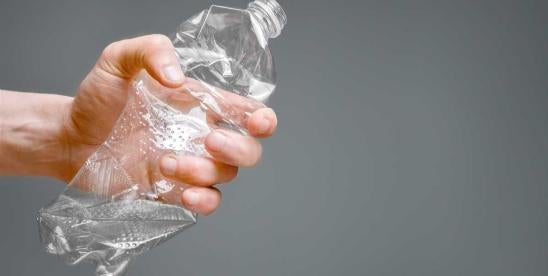On April 10, 2024, the U.S. Environmental Protection Agency (EPA) released a pre-publication copy of its final rule to establish limits on six per-and-polyfluoroalkyl substances (PFAS) in drinking water under the Safe Drinking Water Act (SDWA). The rule will be effective 60 days after publication in the Federal Register.
This is the first time that EPA has set regulatory requirements for PFAS in drinking water, and it is expected to directly affect 66,000 public water systems serving 90 percent of Americans across the country. EPA estimates that between 6-10 percent of systems will exceed one or more of the PFAS Maximum Contaminant Levels (MCLs). EPA also estimates that compliance with this rule will cost approximately $1.5 billion annually for the next 82 years for installing and maintaining treatment technologies or finding alternate sources of water and water system monitoring, and communicating with customers.
EPA’s final National Primary Drinking Water Regulation (NPDWR) establishes both legally enforceable MCLs and unenforceable, health-based Maximum Contaminant Level Goals (MCLGs) for five PFAS individually (PFOA, PFOS, PFNA, PFHxS, and GenX chemicals) and four PFAS as a mixture (PFNA, PFHxS, GenX chemicals, and PFBS), as outlined below.
| PFAS | Proposed MCLs | Final MCLs | Proposed MCLGs | Final MCLGs |
| Perfluorooctanoic acid (PFOA) | 4 parts per trillion (ppt) or nanograms per liter (ng/L) | 4 parts per trillion (ppt) or nanograms per liter (ng/L) | zero | zero |
| Perfluorooctane sulfonic acid (PFOS) | ||||
| Perfluorononanoic acid (PFNA) | N/A | 10 ppt or ng/L | N/A | 10 ppt or ng/L |
| Perfluorohexane sulfonic acid (PFHxS) | N/A | 10 ppt or ng/L | N/A | 10 ppt or ng/L |
| GenX chemicals (HFPO-DA and its ammonium salt) | N/A | 10 ppt or ng/L | N/A | 10 ppt or ng/L |
| Perfluorobutane sulfonic acid (PFBS) | N/A | N/A | N/A | N/A |
| Mixtures containing PFHxS, PFNA, HFPO-DA, and PFBS | 1 (unitless) Hazard Index *Applies to mixtures containing ONE or more of the PFAS | 1 (unitless) Hazard Index *Applies to mixtures containing TWO or more of the PFAS | 1 (unitless) Hazard Index *Applies to mixtures containing ONE or more of the PFAS | 1 (unitless) Hazard Index *Applies to mixtures containing TWO or more of the PFAS |
MCLs and MCLGs
An MCL is the maximum level of a contaminant permitted in potable water that is delivered to a consumer from a public water system. The MCLs for PFOA and PFOS are near the practical level of detection, which, as described by EPA, is the minimum level of quantitation for currently approved analytical methods. EPA determined in December 2021 that at least 75 percent of laboratories in the U.S. should be capable of reliably measuring PFOA and PFOS down to 4.0 ppt using Method 533 and Method 537.1.
In setting the MCL, SDWA required EPA to consider certain factors, including costs, benefits, feasibility, and currently available analytical methods to measure and treat these chemicals in drinking water. MCLGs, on the other hand, do not consider analytical measurement limits or treatment technology effectiveness. EPA establishes MCLGs of zero for PFOA and PFOS because it determined that these PFAS are likely to cause cancer and that there is no dose below which either chemical is considered safe, consistent with longstanding EPA policy that there is no threshold level that is considered “acceptable” for known or probable carcinogens.
For the four other PFAS in the final rule (PFNA, PFHxS, PFBS, and GenX chemicals), EPA established individual MCLs and MCLGs for PFNA, PFHxS, and GenX chemicals. EPA is deferring individual regulation of PFBS at this time. EPA also finalized a novel “hazard index approach” under SDWA for PFAS mixtures containing at least two or more of these four PFAS to account for the combined and co-occurring levels of these PFAS in drinking water. This is a change from the proposed rule, where EPA only proposed a Hazard Index approach for the four PFAS as a mixture rather than proposing individual MCLS and MCLGs for PFHxS, PFNA and GenX chemicals (although EPA had previously proposed setting their health-based water concentrations (HWBC) at 10 ppt for the Hazard Index approach, which is now the level that EPA is using in establishing the individual MCLs and MCLGs for these PFAS). In response to public comments, EPA also changed the Hazard Index approach to require at least two or more PFAS to be present rather than just one or more PFAS.
Monitoring
Community water systems (CWSs) and non-transient, non-community water systems (NTNCWSs) must complete initial monitoring by 2027 (either twice or quarterly during a 12-month period depending on certain factors). Starting in 2027, they must conduct ongoing compliance monitoring (quarterly, unless the agency reduces this frequency based on initial monitoring results), and any monitoring or testing procedure violations require Tier 3 public notification (within one year of learning of violation). CWSs must notify the public with information on the results of their monitoring through their Consumer Confidence Reports.
CWSs and NTNCWSs have until 2029 (increased from the proposed 2027 deadline) to implement PFAS reduction solutions if monitoring demonstrates exceedance of the MCLs. Beginning in 2029, if the water system violates an MCL, it must take action to reduce levels of the PFAS and provide a Tier 2 public notice (as soon as practical, but no later than 30 days after learning of the violation).
Treatment Technologies
EPA identified anion exchange, granular activated carbon (GAC), reverse osmosis, and nanofiltration as the best technologies or treatment techniques available for achieving compliance with the MCLs. EPA also acknowledged non-treatment options that can be used, such as obtaining water from an alternative source.
Additional Federal Resources for Water Systems
EPA also announced that it is making “unprecedented” funding available: an additional $1 billion in newly-available funding through the Infrastructure Investment and Jobs Act, also referred to as the Bipartisan Infrastructure Law (BIL), to help states and territories implement PFAS testing and treatment at public water systems, as well as help owners of private wells address PFAS. This is on top of the $9 billion from the BIL for communities with drinking water impacted by PFAS and other contaminants and an additional $12 billion in BIL finding is available through EPA’s “Justice40 Initiative” to communities to make drinking water improvements.
Potential Impacts on Cleanup Standards
This final rule could have significant impacts on the cleanup standards applicable to properties contaminated with those PFAS that are subject remedial actions under the Comprehensive Environmental Response, Compensation, and Liability Act (CERCLA), the Superfund law. Pursuant to 40 C.F.R. § 300.430(e)(2)(i)(C) of the National Contingency Plan (NCP), because the MCLGs for PFOA and PFOS have been set to zero, the MCLs could be the levels to be attained by remedial actions for ground or surface waters that are current or potential sources of drinking water, so long as those MCLs are relevant and appropriate under the circumstances of the release. However, cleanup levels are site-specific, and EPA historically has enjoyed a fair amount of discretion in this area. We therefore recommend consulting your legal counsel regarding how this final rule regarding PFAS regulation under the SDWA might apply to your site.
EPA Outreach
EPA plans to host three webinars (April 16, April 23, and April 30) to educate the public about this final rule. Information about these webinars can be found on EPA’s website: https://www.epa.gov/sdwa/and-polyfluoroalkyl-substances-pfas#Webinars.
Jaclyn Lee contributed to this article.








 i
i


